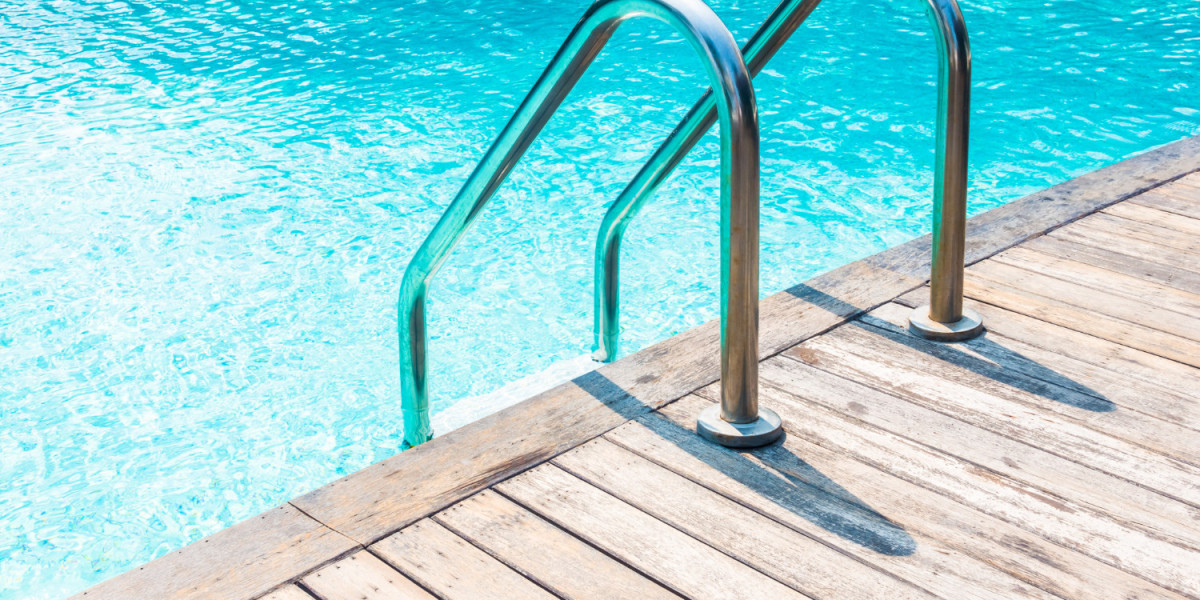When it comes to accessing your watercraft, having the right ladder can make all the difference. Whether you own a boat or have a dock, choosing the right aluminum ladder is essential for safety and convenience. In this article, we'll guide you through the process of selecting the perfect aluminum dock ladder or boat ladder, ensuring you have easy and safe access to your watercraft.
Why Choose Aluminum for Your Ladder?
Aluminum is a popular choice for ladders used in marine environments. Here's why:
Corrosion Resistance
One of the most significant advantages of aluminum is its natural resistance to rust and corrosion. This is particularly important in marine environments where exposure to water and salt can quickly degrade materials. Aluminum's protective oxide layer prevents this degradation, ensuring longevity. This characteristic means less maintenance and peace of mind for boat and dock owners.
Lightweight and Easy Handling
Aluminum ladders are not only resistant to corrosion, but they are also incredibly lightweight. This makes them easy to handle and install, reducing the physical strain often associated with moving heavy equipment. Their portability allows for quick relocation and installation, making them ideal for those who need flexibility in their setup.
Durability and Strength
Despite being lightweight, aluminum is a remarkably strong material. It can withstand the demands of frequent use and harsh environmental conditions without compromising its structural integrity. This durability makes it a reliable choice for both commercial and recreational watercraft users, ensuring that the ladder remains a safe access point for years.
Eco-Friendliness and Recyclability
Aluminum is one of the most environmentally friendly metals available. It is 100% recyclable without any loss of quality, which makes it a sustainable choice for eco-conscious consumers. Choosing aluminum ladders supports recycling initiatives and reduces the environmental footprint associated with manufacturing and waste.
By choosing an aluminum ladder, you're investing in a product that will last, even in harsh marine conditions.
Types of Aluminum Ladders
When selecting a ladder, it's important to understand the different types available. Here's a breakdown of common options:
Dock Ladders
Dock ladders are designed to provide easy access from the dock to the water and back. They come in various styles, including:
Straight Ladders
Straight ladders feature a simple, linear design that makes them straightforward and effective. They are ideal for environments where simplicity and direct access are paramount. These ladders are often used in areas where space is not a constraint, providing a stable and reliable means of entering and exiting the water.
Angled Ladders
Angled ladders have a sloped design, easing the strain on users as they climb in and out of the water. The angle allows for a more natural ascent and descent, reducing the risk of slips or falls. These are particularly useful in areas with variable water levels, as the angled design can accommodate changes more comfortably.
Folding Ladders
Folding ladders offer the unique advantage of space-saving design. They can be folded up when not in use, making them perfect for docks where space is at a premium. This feature also protects the ladder from unnecessary exposure to elements when not in use, potentially extending its lifespan.
Boat Ladders
Boat ladders are specifically designed for attaching to boats. They are usually portable and come in various designs:
Transom Ladders
Transom ladders attach to the back of the boat, making them an ideal choice for smaller vessels. These ladders are typically compact, allowing them to fit in limited spaces without obstructing movement. Their design often includes a quick-release mechanism for easy removal when the boat is in motion.
Gunwale Ladders
Gunwale ladders hook over the side of the boat, providing easy access without permanent installation. This type is favored for its versatility, as it can be easily moved and adjusted to fit different areas along the boat's side. They are perfect for temporary setups or boats without dedicated ladder mounts.
Telescoping Ladders
Telescoping ladders can extend and retract, making them compact for storage. This feature is especially beneficial for boats with limited storage space, as the ladder can be neatly tucked away when not in use. The telescoping function also allows for adjustable lengths, catering to varying water levels and boat heights.
Key Features to Consider
When choosing an aluminum ladder, there are several key features to consider ensuring it meets your needs.
Ladder Length
The length of your ladder is crucial. It should be long enough to reach the water comfortably, but not so long that it becomes cumbersome. Measure the distance from where the ladder will be mounted to the waterline to determine the appropriate length. Consider tidal changes or fluctuating water levels, as these can affect the ladder’s accessibility.
Weight Capacity
Consider the ladder's weight capacity to ensure it can support the weight of the users. Most aluminum ladders have a high weight capacity, but it's always best to check. Ensure that the ladder can support the heaviest user, including any additional gear or equipment they might be carrying.
Rung Design
The rungs of the ladder should provide a good grip to prevent slipping. Some ladders have textured or non-slip rungs for added safety. Look for designs that offer comfort and stability, especially if the ladder will be used frequently or by children and the elderly.
Ease of Installation
Look for ladders that are easy to install and remove. Some models come with quick-release mounting brackets, making installation a breeze. Consider how often the ladder will need to be moved or adjusted, and choose a design that facilitates these changes with minimal effort.
Versatility and Adjustability
Consider ladders that offer versatility in their design, such as adjustable lengths or interchangeable components. A ladder that can adapt to different situations or environments will provide better value and functionality. This adaptability is especially useful for those who use their watercraft in various locations or conditions.
Safety Tips for Using Your Ladder
Safety should always be a top priority when using a ladder. Here are some tips to keep in mind:
Regular Inspection
Inspect your ladder regularly for any signs of wear and tear before use. Look for cracks, bends, or loose components that could compromise safety. Regular maintenance checks can prevent accidents and prolong the life of your ladder.
Proper Climbing Technique
Always face the ladder when climbing and use both hands. This technique ensures better balance and reduces the risk of slipping. Teach all users, especially children, the importance of maintaining three points of contact while on the ladder.
Avoid Overloading
Do not exceed the ladder's weight capacity. Overloading can lead to structural failure and potential injury. Always account for additional weight from wet clothing or gear when calculating the load on the ladder.
Secure Mounting
Ensure the ladder is securely mounted before use. Double-check all fastenings and mounts to confirm they are tight and stable. A securely mounted ladder provides a safe and reliable way to access the water.
Awareness of Surroundings
Be aware of your surroundings when using the ladder, especially in crowded or busy areas. Ensure that others are clear of the ladder when in use to prevent accidents. Communicate clearly with those around you to maintain a safe environment.
Maintenance Tips for Aluminum Ladders
To ensure the longevity of your aluminum ladder, regular maintenance is key. Here are some simple maintenance tips:
Rinse with Fresh Water
After exposure to saltwater, rinse your ladder with fresh water to prevent salt buildup. Salt can corrode even corrosion-resistant materials over time, so a fresh water rinse is crucial. This simple step can significantly extend the life of your ladder.
Check for Loose Parts
Regularly inspect for any loose bolts or screws and tighten them as needed. Loose components can lead to instability and potential accidents. A quick inspection after each use can catch these issues early and prevent problems.
Store Properly
When not in use, store your ladder in a dry place to prevent unnecessary wear. Avoid leaving it exposed to harsh weather conditions, which can accelerate wear and tear. Proper storage helps maintain the ladder's condition and readiness for future use.
Apply Protective Coatings
Consider applying a protective coating or wax to your ladder to add an extra layer of protection against the elements. This step can enhance the ladder's resistance to corrosion and maintain its appearance. Be sure to use products that are compatible with aluminum to avoid damage.
Regular Cleaning
Keep your ladder clean by removing dirt and debris regularly. A clean ladder not only looks better but also functions more effectively. Regular cleaning can reveal potential issues that might be hidden by grime or buildup.
Conclusion
Choosing the right aluminum dock ladder or aluminum boat ladder is crucial for safe and easy access to your watercraft. By considering factors such as material, type, and key features, you can find a ladder that meets your needs. Remember to prioritize safety and maintenance to ensure your ladder lasts for years to come. With the right boat ladder, you can enjoy your time on the water with peace of mind. Investing in a quality ladder enhances both the safety and enjoyment of your aquatic adventures, providing you with reliable access whenever needed.








